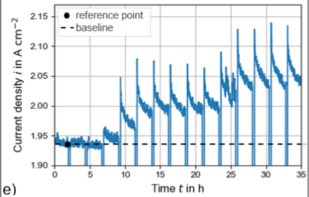
Strategies for reducing the risks of storing carbon dioxide deep underground can be developed by studying the seismic activity associated with waste-water disposal in the oil and gas industry. That is the conclusion of geophysicist James Verdon, of the University of Bristol in the UK, who looked at case studies of 11 waste-water injection sites in the US. He found that the small earthquakes caused by water disposal occur mostly in rock below where the water is stored and not above it: something that is promising for those wanting to capture carbon dioxide and store it underground.
As society struggles to reduce global emissions of greenhouse gases, a number of scientists believe that carbon capture and storage (CCS) will be needed to halt climate change. CCS involves injecting carbon dioxide into rock formations deep underground. However, there are many concerns over the efficacy of CCS. One worry is that the process could trigger earthquakes that would cause cracks in the trapping rock that would allow the gas to leak out again.
Calculating risk
Because most CCS projects are experimental, there are few data available to calculate the risk of CCS-induced earthquakes. But there are similarities between CCS and waste-water injection, which is used to dispose of waste fluids from oil fields. This inspired Verdon to analyse the spatial distribution of the seismicity measured in the 11 waste-water case studies. He also considered the influence of the local geology and the way in which the fluid was being injected. Verdon found that 99% of seismic events occurred within 20 km of the injection well, and that the majority of events took place below the target reservoir.
“We’re still not completely clear as to why most events occur below the injection level,” says Verdon. “However, it is a good thing because events above the injection level would raise concerns that carbon dioxide was leaking out of the target formations and into overlying layers, or to the surface. Events occurring well below the reservoir pose no such concerns.”
So what makes some wells more prone to seismicity than others? Verdon showed that seismicity can only occur when there is a nearby fault, which is close to critical stress. “This [fluid injection] process is not creating earthquakes from scratch,” he says. “There has to be a fault that is fairly near to triggering, and the injection activity pushes it over the edge.”
Hard rocks prone to failure
Verdon also found that faster fluid injection is more likely to lead to higher pore pressures, which increase the risk of seismicity being triggered. Finally, he noted that injection into harder rocks runs the risk of triggering larger seismic events than injection into softer sediments. “Harder rocks can support higher stresses, which leads to larger events when they fail,” he says.
Verdon calculates that the worst-case scenario would be for CCS injection to trigger an earthquake of around magnitude five. “This is assuming that all the volume change put into the ground is released as a single large event,” he says. “In reality, most of the time, most injection into the ground produces little or no seismicity.”
Based on his findings, Verdon has two main recommendations for reducing the risk of induced seismicity at CCS sites. The first is to carry out thorough site characterization and geological appraisal prior to injection, to map any faults that might be re-activated and calculate the kind of stresses necessary to trigger these faults to move. And the second recommendation is to monitor the area during the injection process.
Mitigation strategy
“If injection begins to trigger a fault it might be manifest in smaller events that can be detected by sensitive monitoring apparatus,” he says. “This information could be used to change the injection programme, perhaps by reducing the injection rate or drilling a new well into a different part of the reservoir.”
Verdon thinks that it is important that the issue of induced seismicity is taken seriously and communicated honestly to the public, but he also thinks that this has to be balanced against the risks associated with climate change.
“There will always be a risk that CCS triggers seismicity and we should do the very best we can to appraise and monitor sites to prevent this happening,” he says. “But the risks of not pushing ahead with CCS far outweigh the risks of doing it.”
The research is described in Environmental Research Letters (ERL).
- In this video James Verdon describes the process of “fracking”, which also involves injecting water deep underground:



